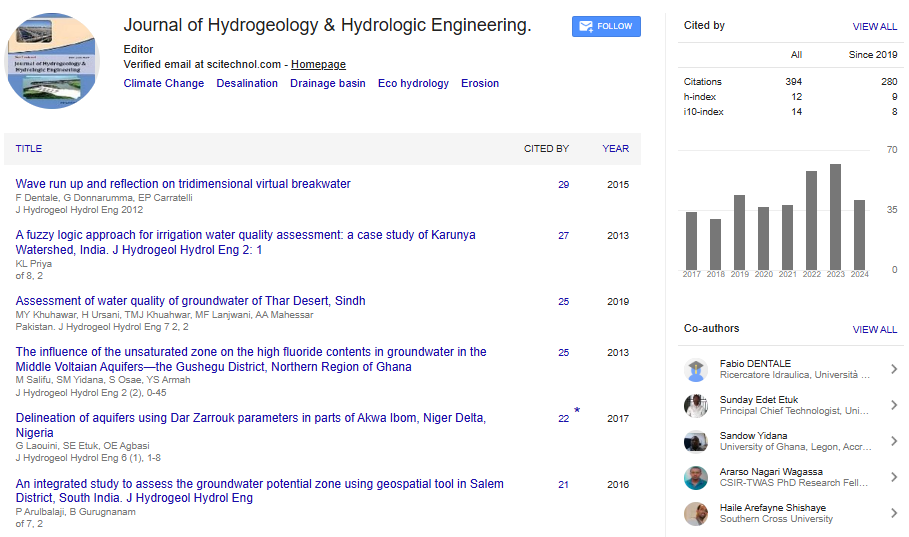Research Article, J Hydrogeol Hydrol Eng Vol: 5 Issue: 4
Modeling of Coupled Processes: Flow, Transport and Geochemistry, Application to the Dissolution of Salt Dome
| Marwen Ben Refifa1*, Canot Édouard2, Guellouz Lamia1 and Bouhlila Rachida1 | |
| 1Université Tunis EL Manar, LMHE, ENIT, Tunisie | |
| 2IRISA, Rennes, France | |
| Corresponding author : Marwen Ben Refifa Université Tunis EL Manar, LMHE, ENIT, Tunisie Tel: (+216) 97-89-22-62 E-mail: marwen.ben.refifa@gmail.com |
|
| Received: June 20, 2016 Accepted: October 21, 2016 Published: October 28, 2016 | |
| Citation: REFIFA MB, Édouard C, Lamia G, Rachida B (2016) Modeling of Coupled Processes: Flow, Transport and Geochemistry, Application to the Dissolution of Salt Dome. J Hydrogeol Hydrol Eng 5:4. doi: 10.4172/2325-9647.1000143 |
Abstract
One of the most recognized hydro geochemical problems is the one of salt dome (case 5, level 1 of the international HYDROCOIN ground water flow benchmark). Several teams simulated this problem with different calculation codes. The rock salt dome is characterized by a very low permeability (10-20 m2). The hydrogeologists usually consider this rock as impervious. In reality, this value of permeability allows the circulation of the water inside the rock. In this paper we use the code GEODENS for the calculation of the flow and the transport with variable density. The problem of the dome is characterized by high concentrations (density), we thus used a chemistry code that we coupled with GEODENS for the calculation of the density and the concentrations in the presence of precipitated salts. Moreover we study the influence of this low permeability on the variations of the porosity of the rock of the dome as well as the quantities of salt dissolved (lost). We showed that the porosity of the top band of the dome has increased by a factor of 4.5 after a simulation of 10000 years. For the same duration, the top layer of the dome lost 50% of the quantity of salt initially stored in these pores. The acceleration of the dissolution process, even if it is rather slow, cannot be neglected when long duration occurs.
 Spanish
Spanish  Chinese
Chinese  Russian
Russian  German
German  French
French  Japanese
Japanese  Portuguese
Portuguese  Hindi
Hindi 
